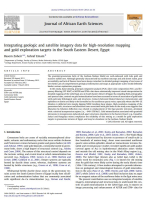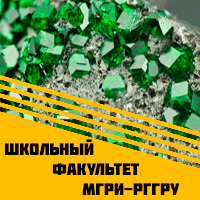Добрый день, Коллеги. Важное сообщение, просьба принять участие. Музей Ферсмана ищет помощь для реставрационных работ в помещении. Подробности по ссылке
Integrating geologic and satellite imagery data for high-resolution mapping and gold exploration targets in the South Eastern Desert, Egypt / Интеграция данных геологических и спутниковых снимков для картографирования с высоким разрешением и поиска золота
The granitoid-greenstone belts of the Arabian–Nubian Shield are well-endowed with lode gold and massive sulfide ores. Although generally characterized by excellent outcrops and arid desert realm, poor accessibility and lack of finance have been always retardant to detailed geologic mapping of vast areas of the shield. Lack of comprehensive geological information and maps at appropriate scales would definitely hinder serious exploration programs.
In this study, band ratioing, principal component analysis (PCA), false-color composition (FCC), and frequency filtering (FFT-RWT) of ASTER and ETM+ data have substantially improved visual interpretation for detailed mapping of the Gebel Egat area in South Eastern Desert of Egypt. By compiling field, petrographic and spectral data, controls on gold mineralization have been assessed in terms of association of gold lodes with particular lithological units and structures. Contacts between foliated island arc metavolcanics and ophiolites or diorite are likely to be favorable loci for auriferous quartz veins, especially where the NW–SE foliation is deflected into steeply dipping NNW-trending shear planes. High-resolution mapping of the greenstone belt, structures and alteration zones associated with gold lodes in the study area suggests that dilatation by foliation deflection was related to emplacement of the Egat granitic intrusion, attendant with a sinistral transpression regime (i.e., 640–550 Ma?). Gold mineralization associated with granitoid intrusions in transpression-induced pull-apart structures elsewhere in the Eastern Desert (e.g., Fawakhir, Sukari and Hangaliya mines) emphasize the reliability of this setting as a model for gold exploration targets in greenstone terrains of Egypt, and may be elsewhere in the Arabian–Nubian Shield. <...>




